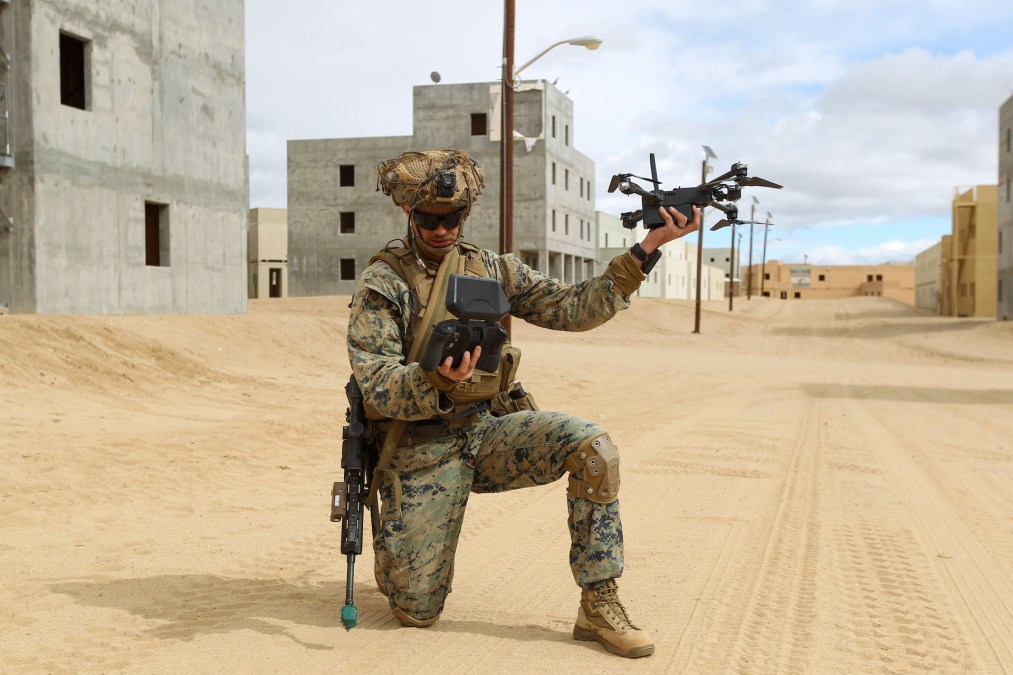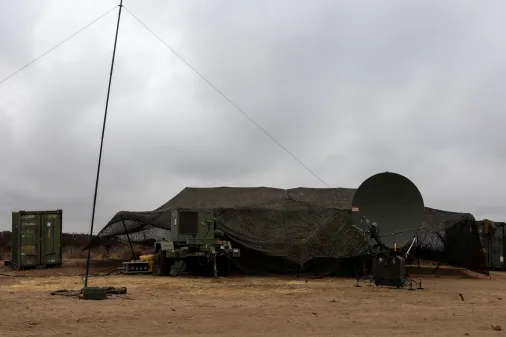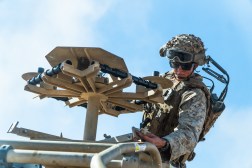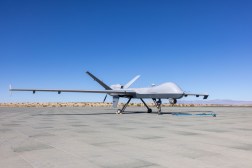Marine Corps Warfighting Lab experiments to ‘sense and make sense’ of littoral environments

Over the last 18 months, the Marine Corps Warfighting Laboratory has conducted a range of experiments with the 3rd Marine Littoral Regiment and other “stand-in forces” to refine operational concepts and technology requirements informing the Force Design 2030 modernization effort.
Originally known as the 3rd Marine Regiment from 1914 to 2022, the 3rd MLR was renamed last year to align with the future force design that Commandant Gen. David Berger has been promoting. The regiment is responsible broadly for littoral maneuver missions in the Indo-Pacific theater.
At the annual Modern Day Marine convention on Tuesday, Lt. Col. Jarrod Larson detailed some of the “key technologies” the service and its warfighting lab have applied in recent exercises and events where they puzzle out concepts.
“One thing I want to say is in all of our experimentation, the focus for the last 18 months, really, has been on how we sense and make sense of that littoral environment to help out with the stand-in force mission, which is that reconnaissance/counter-reconnaissance force that the commandant and the force design have really laid out as our marching orders moving forward,” Larson said.
He pointed to three broad technology areas that have been instrumental in enabling the experiments with the 3rd MLR.
“First is the commercial off-the-shelf” surface navigation radars, Larson said — noting the lab is using those as surrogate technologies for experimentation, with the ultimate intent of refining maritime domain awareness and targeting concepts.
The organization has also been experimenting a lot with Marine air-ground task force command-and-control systems to ensure future Marine units at all echelons are tied into the Pentagon’s envisioned combined Joint All-Domain Command and Control (CJADC2) network, according to Larson.
“We are also using the V-Bat Group 3 [unmanned aerial system] as a surrogate for a future regimental organic airborne [intelligence, surveillance, reconnaissance and targeting] platform,” he explained.
Larson’s team has also been supporting key exercises, including Northern Edge, RIMPAC and the Marine Littoral Regiment Training Exercise.
That latter effort “was the first time we really saw the Marine Littoral Regiment do the stand-in force mission at scale across a distributed battlespace. We learned a lot of good lessons and we’re able to evolve the concepts coming out of that,” he explained.
Larson told DefenseScoop that the “next big set of exercises” the experimentation team is preparing for is the Force Design 2030 integration event, which will kick off in Hawaii at the end of September.
“There, we’ll be really focusing, not just on the MLR — but on the entire stand-in concept, from all assets in place,” he said.






